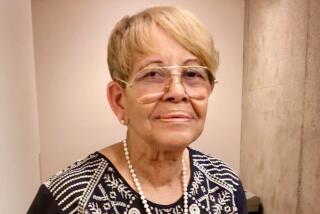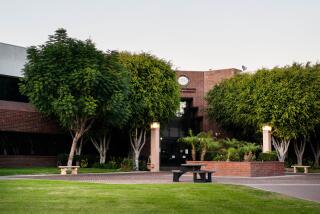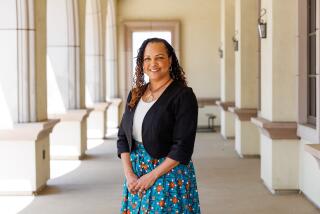Future Doctors Find Science Is ‘Neat’
- Share via
WATTS — For three hours on a recent Saturday, 9-year-old Sinecia Miller was Dr. Sinecia Miller.
Wearing a white lab coat, a name tag with her “official” title and a stethoscope, Sinecia listened to heartbeats, took blood pressure readings and learned to detect minor ailments at the Saturday Science Academy run by the Charles R. Drew University of Medicine and Science.
Since 1989, the academy has been offering hands-on lessons in science and medicine to black and Latino youngsters, hoping to cultivate the next generation of minority doctors, nurses and scientists.
University officials said they hope the workshop will help assuage fears among youngsters that science is too difficult.
“I really think this is an important program because these kids don’t get chances like this,” said Sylvestre Rodriguez, a volunteer instructor who is studying to be a physicians’ assistant. “These kids here, they’ll stay in the medical field. And we need more of us there.”
Only 3.6% of the nation’s physicians are black and 4.9% are Latino, according to figures compiled by the American Assn. of Medical Colleges.
Drew University’s Center for Educational Achievement runs the science academy in October, November, February, March and April for as many as 80 youngsters at a time. The students, ages 7 to 13, are divided into four sections that cover biology, physiology, zoology and similar subjects.
The academy is trying to raise $300,000 to operate year-round, said program director Mary Blanding. It currently costs about $20,000 a year to run the program with an all-volunteer staff, she said.
A $50 fee charged to parents who can afford it does not cover all expenses.
Staff from King-Drew Medical Center and students from the university volunteer to teach the students in four subjects--art in science, in which students draw parts of the anatomy; medicine, in which the students act as doctors; zoology and biology, which include animal dissection.
As he hovered over the body of a two-foot-long dog shark, 9-year-old Jason Harris carefully cut out its spleen and moved in for a better look at its remaining organs.
“Wow. This is neat,” the fourth-grader said as another student cut out the stomach, exposing arteries and a better view of the tiny heart.
For many of the youngsters, the lessons are fun and exciting. For the parents, it’s a way to enhance their children’s education. For Irene Lee, the science academy means daughter Darshan, 8, watches less television and cares more about learning science and other subjects.
“She watches Channel 28 all the time now--the science shows. She’s really focused in on this. I even had to buy her a microscope for Christmas,” Lee said while waiting for a parents’ workshop to begin.
The center holds the monthly workshops for adults to share their experiences and concerns on raising children. Translators work with Spanish-speaking parents.
“Everything they’re doing is a help,” Lee said. “It’ll be interesting to see if Darshan stays with science and medicine. For right now, she’s on the road to being our family’s first doctor.”
Information: (213) 563-4926.






